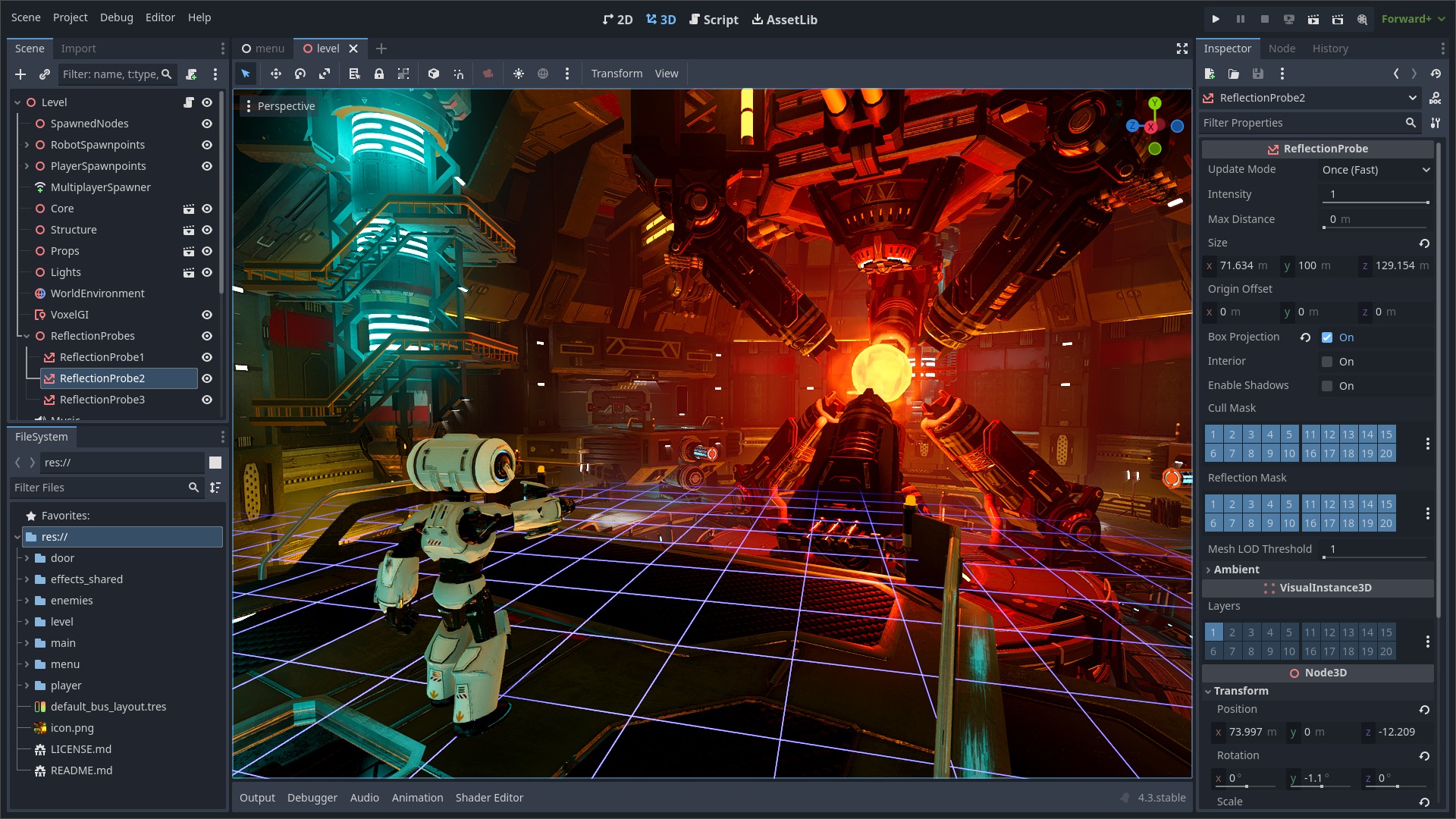Resolves godotengine/godot-proposals#1246. It is difficult to tell the difference between the handles for adjusting curves and the points themselves when looking at a Path gizmo. This re-uses the icons used for Path2D. Unlike Path2D, this does not use a different icon for smooth vs sharp points, as using a potentially different material for each point would prevent batching the points in add_handles (and adding them out-of-order messes up other logic based on handle indices). This includes a public API change to allow specifying a texture for a handle material. This allows spatial gizmo plugins to customize the way a handle is rendered, if desired, but does not break existing behavior (as providing no texture uses the default). The path handle icons were resized as well. 16x16 is the standard icon size. These icons were 10x10 rather than 16x16, and appeared rather small in the editor. To resize, I: - Opened the original in Inkscape - Resized the document to 16x16 - Opened the transform dialog - Scaled by 160% proportionally - Used Align/Distribute to center on the page - Saved the document - Cleaned with `svgcleaner --multipass` |
||
|---|---|---|
| .github | ||
| core | ||
| doc | ||
| drivers | ||
| editor | ||
| main | ||
| misc | ||
| modules | ||
| platform | ||
| scene | ||
| servers | ||
| tests | ||
| thirdparty | ||
| .clang-format | ||
| .clang-tidy | ||
| .editorconfig | ||
| .gitattributes | ||
| .gitignore | ||
| .lgtm.yml | ||
| .mailmap | ||
| AUTHORS.md | ||
| CHANGELOG.md | ||
| CONTRIBUTING.md | ||
| COPYRIGHT.txt | ||
| DONORS.md | ||
| glsl_builders.py | ||
| icon.png | ||
| icon.svg | ||
| LICENSE.txt | ||
| LOGO_LICENSE.md | ||
| logo.png | ||
| logo.svg | ||
| methods.py | ||
| platform_methods.py | ||
| README.md | ||
| SConstruct | ||
| version.py | ||
Godot Engine
2D and 3D cross-platform game engine
Godot Engine is a feature-packed, cross-platform game engine to create 2D and 3D games from a unified interface. It provides a comprehensive set of common tools, so that users can focus on making games without having to reinvent the wheel. Games can be exported in one click to a number of platforms, including the major desktop platforms (Linux, macOS, Windows), mobile platforms (Android, iOS), as well as Web-based platforms (HTML5) and consoles.
Free, open source and community-driven
Godot is completely free and open source under the very permissive MIT license. No strings attached, no royalties, nothing. The users' games are theirs, down to the last line of engine code. Godot's development is fully independent and community-driven, empowering users to help shape their engine to match their expectations. It is supported by the Software Freedom Conservancy not-for-profit.
Before being open sourced in February 2014, Godot had been developed by Juan Linietsky and Ariel Manzur (both still maintaining the project) for several years as an in-house engine, used to publish several work-for-hire titles.
Getting the engine
Binary downloads
Official binaries for the Godot editor and the export templates can be found on the homepage.
Compiling from source
See the official docs for compilation instructions for every supported platform.
Community and contributing
Godot is not only an engine but an ever-growing community of users and engine developers. The main community channels are listed on the homepage.
To get in touch with the engine developers, the best way is to join the #godotengine-devel IRC channel on Freenode.
To get started contributing to the project, see the contributing guide.
Documentation and demos
The official documentation is hosted on ReadTheDocs. It is maintained by the Godot community in its own GitHub repository.
The class reference is also accessible from the Godot editor.
The official demos are maintained in their own GitHub repository as well.
There are also a number of other learning resources provided by the community, such as text and video tutorials, demos, etc. Consult the community channels for more information.


